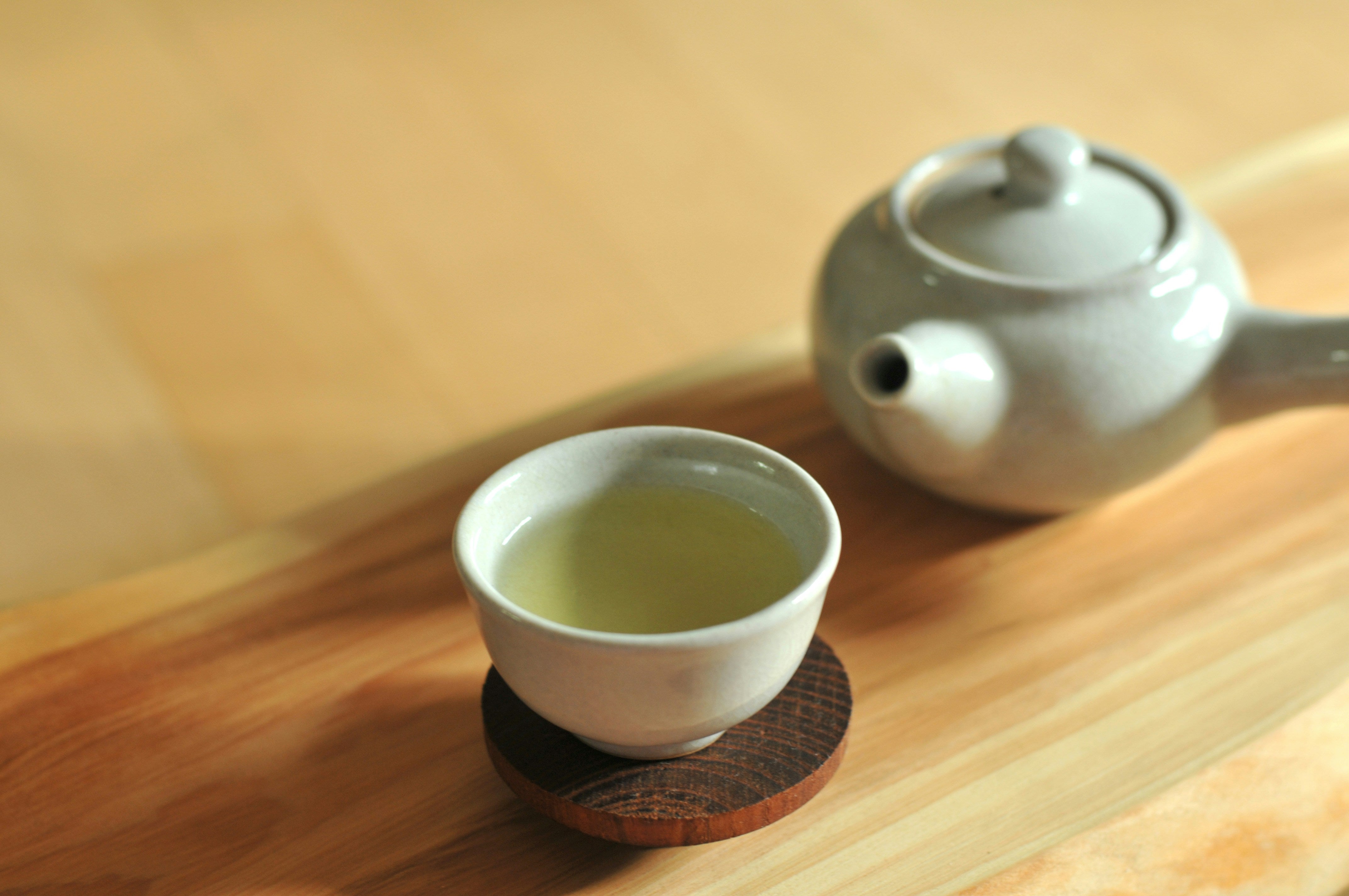Dietary advice often hinges on eating less. In the rare instance we are told to eat more of something, the subject nowadays is invariably protein or fibre. But there is another naturally occurring dietary compound – present in berries, green tea, coffee and even dark chocolate – which recent research suggests can have geroprotective effects. In layman’s terms: it may help protect against, or slow down, the biological processes involved in ageing.
“Polyphenols are a large family of plant compounds,” explains Dr Karan Rajan, a medical doctor and author of This Book May Save Your Life. “This includes flavonoids like EGCG [epigallocatechin gallate] in green tea, phenolic acids such as chlorogenic acid in coffee, and many others. They act as antioxidants with anti-inflammatory properties.”
A review article, published in the Ageing Research Reviews journal in 2025, suggested that “polyphenols may exert geroprotective effects by modulating the hallmarks of ageing” after observing a high consumption of polyphenol-rich foods in “blue zones” – five regions across the world where people have been observed to live significantly longer, healthier lives.
Does this mean you, too, could increase your lifespan by including a few more berries and cups of green tea in your weekly routine? As always, the answer is more nuanced than that. Here, a team of nutritional and medical experts unpick the extent of polyphenol’s health-boosting properties.
What does the research say about polyphenols?
The original blue zones are Sardinia in Italy, Okinawa in Japan, Ikaria in Greece, Nicoya in Costa Rica and Loma Linda in California. With longevity a hot topic in the 21st century, these regions have been subject to many headlines and books exploring the correlates between the lifestyles and lifespans of their populations.
However, a 2024 study by demographer Dr Saul Justin Newman questioned the concept of blue zones due to bad data, such as the absence of birth certificates in the highlighted regions.
“Only 18 per cent of ‘exhaustively’ validated supercentenarians [those aged significantly above 100 – usually 110] have a birth certificate, falling to zero per cent in the USA, and supercentenarian birthdates are concentrated on days divisible by five: a pattern indicative of widespread fraud and error,” it reports.
The 2025 review article on polyphenols uses long-lived individuals living in these blue zones, who remain free from chronic diseases, as a “valuable model to investigate the complex interplay of biological, genetic and environmental factors that contribute to exceptional longevity”.
It recognises that, while centenarians are inclined towards polyphenol-rich plant-based diets, longevity is not just determined through diet but also a blend of lifestyle and socio-cultural factors. It also lists a series of limitations, such as a lack of data around the exact polyphenol intake of those living in the blue zones.
But it does identify “associations between higher polyphenol consumption and the lower incidence of age-related diseases in these populations”, adding that “a significant body of evidence suggests that polyphenols… may exhibit geroprotective activity by influencing underlying biological mechanisms of ageing and promoting optimal longevity”.
Read more: A cardiac nurse says these five daily behaviours can reduce your risk of heart disease

So, while the concept of blue zones has been called into question, the study concludes that evidence suggests polyphenols can still have a positive impact on the ageing process.
Our experts generally agree, but also point to other factors at play in deciding the length of someone’s life, and the health with which it is lived.
“Populations in so-called ‘blue zones’ tend to eat diets naturally higher in polyphenols by up to 30 per cent, compared to the average diet,” says Dr Richard Allison, nutritionist at Herbalife. “While it’s not the only factor – exercise, community and overall lifestyle play a role too – research suggests polyphenols may help explain some of their healthy ageing advantages.”
“From a dietary perspective, a high intake of plant-based foods has been noted in these areas, which would provide a significant supply of polyphenols, as well as fibre and other key nutrients,” adds Kerry Beeson, a nutritional therapist with Prep Kitchen who holds a degree in nutritional medicine.
“However, blue zones are not the only regions with high plant food consumption, which suggests that polyphenols alone may not be the sole explanation. Gut health has also been investigated as an important factor in longevity, for example. On that note, there may be an important synergy there, as polyphenols can act as prebiotics, working with dietary fibre and fermented foods to support a diverse microbiome that in turn positively influences immunity, inflammation, and ultimately, healthy ageing.”
And finally, Dr Rajan points to links between diets high in polyphenols, such as the Mediterranean diet and blue zone diet, and cardiometabolic and anti-inflammatory benefits.
“However, most evidence is observational, so we can’t isolate polyphenols as the sole driver of longevity,” he says. “Other factors such as genetics, sleep, activity levels, lower smoking and processed food intake all play big roles. Publication bias and ‘healthy user effect’ can also skew findings.”
Read more: The important thing your exercise plan is probably missing – particularly if you’re older

What are polyphenols?
“Polyphenols are natural compounds found in many plant-based foods,” says Beeson. “They are often the pigments in fruits, vegetables, herbs and spices that give them their vibrant colours.”
There are many different types of polyphenols, but Beeson says most fall into one of the categories below:
- Flavonoids: e.g. catechins in tea, anthocyanins in berries, quercetin in onions and isoflavones in soya.
- Phenolic acids: e.g. caffeic acid in coffee, ferulic acid in whole grains and gallic acid in tea, grapes and berries.
- Proanthocyanidins: found in fruits like grapes and apples, as well as cocoa and dark chocolate.
- Lignans: found in wholefoods such as flaxseeds and sesame seeds.
- Stilbenes: the most well-known polyphenol in this category is resveratrol in red grapes and wine.
- Special cases: some polyphenols don’t fall into the main categories, such as curcumin, a unique curcuminoid found only in turmeric.

What are the benefits of polyphenols?
Dr Rajan lists an impressive CV for polyphenols. They can help improve cardiometabolic function, support endothelial function (related to the lining of the blood vessels) and they have anti-inflammatory effects. Polyphenols may also aid lipid modulation and directly impact gut microbiome health, he adds.
In the gut, they exhibit prebiotic properties to feed “good bacteria”, and offer antimicrobial effects against pathogenic microorganisms (those capable of causing disease), Beeson explains, citing a 2019 review published in the Nutrients journal.
She continues: “Polyphenols act as antioxidants, reducing oxidative stress and helping protect cells from damage. They have anti-inflammatory effects and research suggests they may support cardiovascular health, improve blood sugar control, boost immune function and lower the risk of developing chronic diseases like cancer and Alzheimer’s disease.”
And the potential perks don’t end there.
“They help lower blood pressure, improve cholesterol levels and protect arteries,” adds Dr Allison. “Some polyphenols cross into the brain to protect neurons, where they may protect memory and potentially slow age-related cognitive decline. They can improve how your body handles blood sugar, supporting energy balance and diabetes prevention, and polyphenols may slow some of the cellular processes linked with ageing, helping you stay healthier for longer.”
Read more: Five stretches you should be doing every day according to a flexibility expert

Which foods contain polyphenols?
“You’ll get polyphenols from a wide variety of plant-based foods,” says Dr Allison. Combined, he, Beeson and Dr Rajan provided the following list detailing most of the major sources:
- Berries – especially blueberries, blackberries and strawberries.
- Cocoa and dark chocolate – 70% cocoa or higher.
- Green tea and coffee.
- Grapes and red wine – “Though alcohol obviously has downsides for gut health and it is more generally linked to increased risk of cancers, so grapes are better,” says Dr Rajan.
- Apples and pears.
- Turmeric – curcumin is the active compound – and other herbs and spices.
- Olive oil.
- Nuts such as almonds or walnuts.
- Onions and garlic.

What quantity of polyphenols is needed in your diet to see benefits?
While our featured experts agree that polyphenols can provide plenty of health perks, the current research available on this dietary compound does not point to an exact quantity to aim for in your diet.
“It’s still difficult for researchers to set an official ‘recommended daily amount’ for polyphenols, but a daily intake of at least 500-900 mg of mixed polyphenols appears to be the benchmark to see benefits,” says Beeson.
“This is the sort of amount you’d naturally get from a diet rich in fruit, vegetables, tea, coffee, good quality dark chocolate and whole grains. Of course, these benefits are also linked to regular dietary patterns consumed over long periods of time, rather than occasional intake of polyphenols.”
Dr Alison suggests aiming for a slightly higher total of 1,000mg per day, which he says is “usually sufficient to see visible benefits including general anti-inflammatory health and cardiovascular health”.
This is roughly the equivalent of a cup of berries, two to three cups of green tea or coffee and a small piece of dark chocolate plus, supplemented by regular intake of fruits, vegetables, nuts and olive oil throughout the day, he explains.
“You’ll usually start noticing benefits like better energy, digestion, and recovery within a few weeks of consistent intake.”
Dr Rajan, on the other hand, suggests people should focus less on a specific amount or concentration of polyphenols, and more on overall dietary patterns to see improvements to their health.
“A Mediterranean-style diet is naturally rich in polyphenols,” he says. “Small daily choices, like opting for black coffee, snacking on a couple of squares of dark chocolate, eating some mixed berries and having olive oil with meals, will add up over time.”

How to enjoy a healthier diet rich in polyphenols
Dr Rajan says that, based on existing evidence, it is likely that polyphenols have geroprotective qualities. This is largely thanks to their positive impact on heart and blood vessel health, anti-inflammatory properties and benefits for the gut microbiome, according to Beeson.
If you want to incorporate more polyphenols into your weekly diet, consistency is key, Dr Allison advises. Below, our three experts share their top tips for doing so, as well as providing a few suggestions for improving the general quality of your diet:
- Focus on dietary patterns, not supplements.
- Combine polyphenol-rich foods such as coffee, berries, olive oil, nuts and cocoa with fibre – fibre is crucial as it feeds gut bacteria, which then transform polyphenols into beneficial compounds.
- Rotate and diversify plant foods and fibres for the best effect.
- Evidence for polyphenol supplements is weak compared to whole foods, so it’s always best to get polyphenols from natural food sources.
Tips from Dr Richard Allison, nutritionist at Herbalife:
- Start your morning with green tea or coffee.
- Add a handful of berries to your breakfast or snacks.
- Swap butter for olive oil when cooking.
- Snack on nuts and a square of dark chocolate.
- Add turmeric to meals such as soups, curries or even smoothies, along with a pinch of black pepper to boost absorption.
Tips from Kerry Beeson BSc (nutritional medicine), nutritional therapist at Prep Kitchen:
- Replace crisps and standard chocolate bars as snacks with a handful of nuts, some berries and a couple of squares of dark chocolate (70% cocoa and above).
- The recommended daily intake of five portions of fruit and vegetables isn’t enough. Aim for at least seven, and try to eat different colours to vary the types of polyphenols you consume – the brighter the better.
- Make your own polyphenol-rich salad dressing with ingredients like extra virgin olive oil, pomegranate nectar and lemon juice.
- Swap syrups and sugar for honey and maple syrup – these are further sources of polyphenols.
- Have a cup or two of good quality tea or coffee each day – matcha green or white tea are the highest in polyphenols. Note that adding milk to your coffee lowers the absorption of polyphenols into your body, and it’s best taken warm, so an espresso shot is ideal.
- Include fibre-rich plant-based protein sources such as beans, lentils and chickpeas in your diet, as well as wholegrains like oats, brown rice and wholemeal bread. These are a staple in blue zone diets and rich in polyphenols. They also contain fibre to support gut health.
- Add herbs and spices liberally when cooking. Fresh is best but dried versions are still useful sources. Also, consider using functional foods such as moringa and maca in smoothies and on cereal.
- Incorporate fermented foods such as kefir, sauerkraut or kimchi in your diet regularly. These not only contain beneficial compounds themselves but also support gut bacteria that help metabolise polyphenols efficiently.
Read more: I spoke to the man who wrote the book on fermentation – here is his golden rule for gut health
Source link

